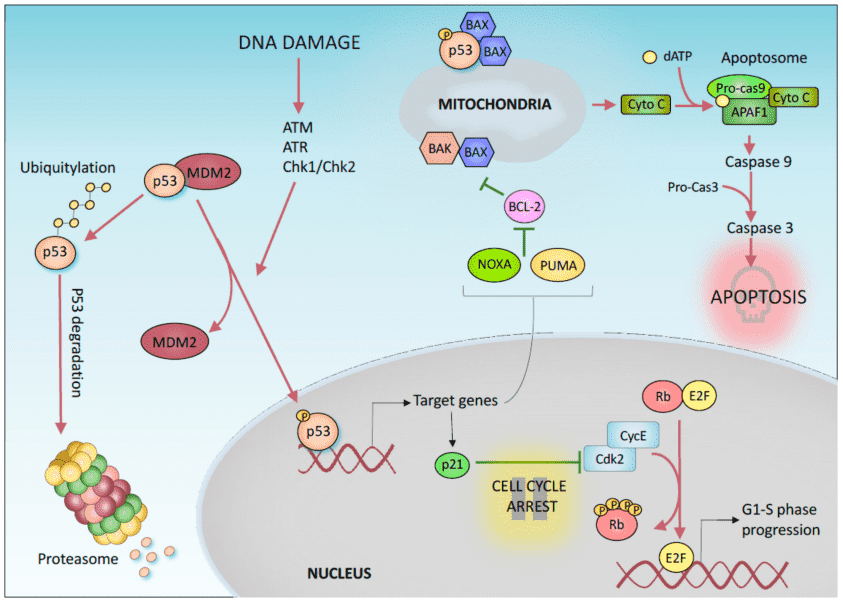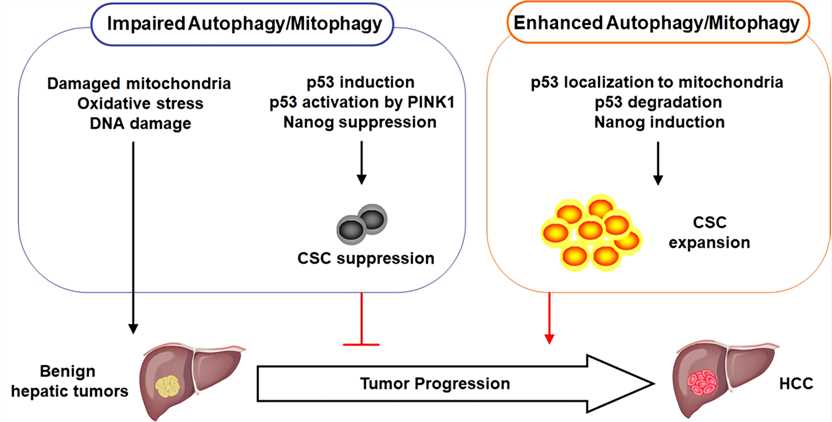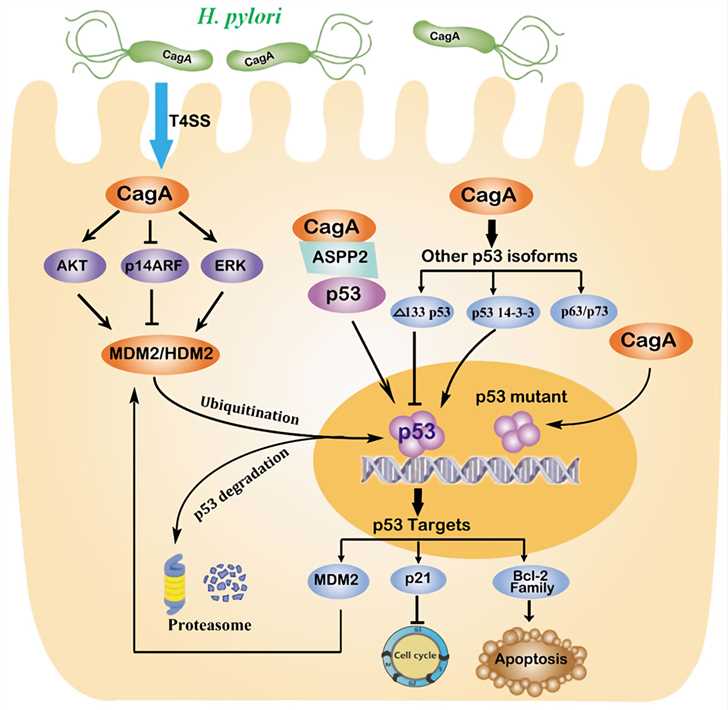NAA Services for Anti-p53
p53 is a 53 kDa protein that forms tetramers and functions as a tumor suppressor and transcriptional activator of genes. At Creative Biolabs, we have many years of experience and high-end technologies in NAA (natural autoantibodies) research and successfully developed a series of innovative and diversified NAA platforms to provide extensive services for our worldwide customers. Therefore, we are now providing a full range of anti-p53 marker services for diseases diagnosis and therapeutic monitoring.
Background of Anti-p53
P53, or tumor protein 53, plays a key role in tumor suppression which responds to diverse cellular stresses to regulate target genes that induce cell cycle arrest, apoptosis, senescence, DNA repair, signal transduction, cell adhesion or changes in metabolism. The gene encoding this 53 kDa protein is the most commonly mutated gene in human cancers, which located on the distal band of the short arm of chromosome 17p13. As a key tumor suppressor, p53 is localized to the nucleus when activated and can be upregulated by genotoxic or other cellular stresses. P53 protein is expressed at a low level in normal cells while at a high level in a variety of transformed cell lines, where it's believed to contribute to transformation and malignancy. It also is a DNA-binding protein containing transcription activation, DNA-binding, and oligomerization domains. In brief, P53 is a tumor suppressor gene which is often mutated in cancer and the autoantibodies to p53 protein have also been detected in some cases, even before the cancer diagnosis.
 Fig.1 The role of p53 in the DNA damage response.1
Fig.1 The role of p53 in the DNA damage response.1
The Role of Anti-p53 in Primary Liver Cancer
Liver cancer, a malignant tumor originates in the liver, is one of the most frequent malignancies worldwide with an increasing incidence and poor prognosis. Among the pivotal players in liver cancer biology is the tumor-suppressor protein p53, serving as a major barrier against malignant transformation and progression. As an integral part of the cellular stress response, p53 is induced by a variety of stress signals, including DNA damage, oncogene activation, telomere shortening, hypoxia, and nutrient deprivation. Extensive stress and irreversible damage are usually followed by the induction of apoptosis or senescence to eradicate the affected cells. Mild or transient stress initiates p53 responses, such as cell cycle arrest and DNA repair, to allow the restoration and ultimately further survival. Abnormalities of p53 are considered as a predisposition factor for hepatocarcinogenesis. P53 is frequently mutated in hepatocellular carcinoma (HCC), the most common type of liver cancer. To respond to and eliminate these P53 mutations, autoantibodies specifically against P53 are produced by the immunity system. High expression of p53 in vitro may exert therapeutic effects on HCC in two aspects which are a high expression of exogenous p53 protein induces apoptosis of tumor cells by inhibiting proliferation of cells through several biologic pathways and exogenous p53 renders HCC more sensitive to some chemotherapeutic agents. Meanwhile, the detection of anti-P53 autoantibody in the serum can provide great diagnostic value in HCC.
 Fig.2 Illustration of the roles of p53 in hepatocarcinogenesis. (Tian, 2017)
Fig.2 Illustration of the roles of p53 in hepatocarcinogenesis. (Tian, 2017)
The Role of Anti-α fetoprotein in Lung Cancer
P53 is a widely studied tumor suppressor protein and its role is to prevent carcinogenic and teratogenic lesions. It has been shown that p53 may become immunogenic among patients with malignancy. p53 was the first antigen described to elicit autoantibodies in cancer, and autoantibodies to p53 could be detected in the sera of the patients before the diagnosis of the malignant disease. For instance, anti-p54 antibodies have been shown to be raised in people who smoke both with and without evidence of cancer. Higher levels of anti-p53 antibodies were found in the sera of heavy smokers who developed lung cancer. Moreover, anti-p53 was examined in the sera of healthy uranium miners, miners with lung cancer or abnormal chest radiographs, and miners with systemic lupus erythematosus.
The Role of Anti-p53 in Gastric Cancer
Gastric cancer is a highly prevalent disease associated with a high rate of mortality, being classified into 2 general subtypes: intestinal and diffuse. Helicobacter pylori (H. pylori) is an ancient and persistent inhabitant of the human stomach that is closely linked to the development of gastric cancer. A high prevalence of p53 mutations is related to H. pylori infection. The p53 protein is a transcriptional factor that arrests the cell cycle in the G1 phase when DNA is damaged by inducing the expression of the p21 protein, an inhibitor of Cdk kinase and PCNA. Thus, damaged DNA can’t replicate, allowing time for the repair system to act. If this system fails, p53 induces apoptosis by transactivation of the Bax gene. In gastric cancer, p53 gene alterations have been observed in both histological subtypes, being correlated with node-positive cancer, depth of tumor invasion, and poor survival. After a preoperative test of serum anti-p53 antibodies in gastric cancer patients can be useful to identify patients who may need gastrectomy with lymph node dissection and post-operative adjuvant therapy. Therefore, p53 overexpression is related to gastric cancer progression and immunoreactivity in the metastatic lymph nodes. The anti-p53 autoantibodies also have the potential in application for the diagnosis of both intestinal and diffuse histological types of gastric cancer.
 Fig.3 Regulation of p53 in gastric carcinogenesis induced by H. pylori. (Li, 2016)
Fig.3 Regulation of p53 in gastric carcinogenesis induced by H. pylori. (Li, 2016)
What We Can Do About NAA?
NAAs participate in a variety of physiological activities whose can be used as biomarkers in clinical diseases diagnosis. Based on cutting-edge technologies and accumulated experience in NAA development, Creative Biolabs provides comprehensive NAA services including but not limited to:
➢ NAA Detection
➢ NAA Profiling
➢ NAA Affinity Measurement
➢ NAA Epitope Mapping
➢ Paratope Mapping
➢ Related Applications
Creative Biolabs is determined to satisfy the growing need for products and services about NAA. We have experts who are able to help you with the NAA development of anti-p53 marker services for diseases diagnosis and therapeutic monitoring. If you are interested in our services, please contact us for more details.
References
- Pitolli, Consuelo, et al. "p53-mediated tumor suppression: DNA-damage response and alternative mechanisms." Cancers 11.12 (2019): 1983.
- Tian, Yongjun, Linya Wang, and Jing-hsiung James Ou. "New insight into the role of autophagy in tumorigenesis." Cell Stress 1.3 (2017): 136.
- Li, Nianshuang, Chuan Xie, and Nong-Hua Lu. "p53, a potential predictor of Helicobacter pylori infection-associated gastric carcinogenesis?." Oncotarget 7.40 (2016): 66276.
Related Services:
- NAA Services for Anti-CAGE
- NAA Services for Anti-MUC1 Antibody
- NAA Services for Anti-HER2
- NAA Services for Anti-c-Myc Antibodies
- NAA Services for Anti-GBU4-5

